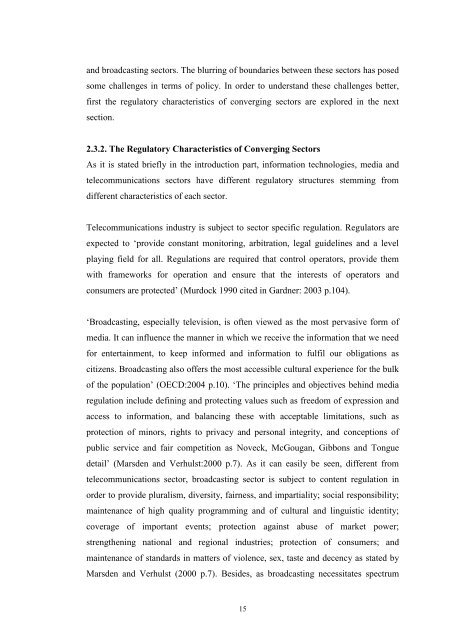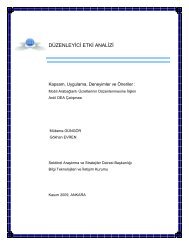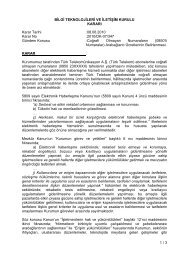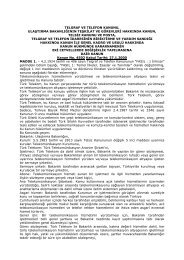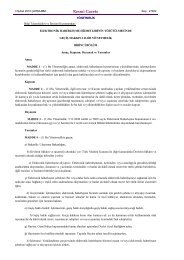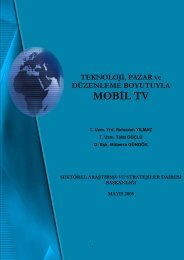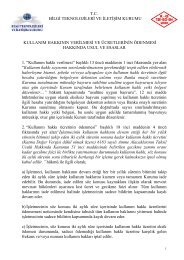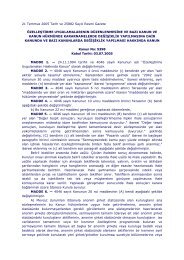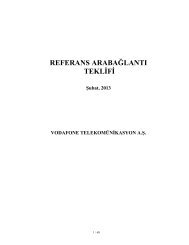city university london school of social sciences convergence of ...
city university london school of social sciences convergence of ...
city university london school of social sciences convergence of ...
You also want an ePaper? Increase the reach of your titles
YUMPU automatically turns print PDFs into web optimized ePapers that Google loves.
and broadcasting sectors. The blurring <strong>of</strong> boundaries between these sectors has posedsome challenges in terms <strong>of</strong> policy. In order to understand these challenges better,first the regulatory characteristics <strong>of</strong> converging sectors are explored in the nextsection.2.3.2. The Regulatory Characteristics <strong>of</strong> Converging SectorsAs it is stated briefly in the introduction part, information technologies, media andtelecommunications sectors have different regulatory structures stemming fromdifferent characteristics <strong>of</strong> each sector.Telecommunications industry is subject to sector specific regulation. Regulators areexpected to „provide constant monitoring, arbitration, legal guidelines and a levelplaying field for all. Regulations are required that control operators, provide themwith frameworks for operation and ensure that the interests <strong>of</strong> operators andconsumers are protected‟ (Murdock 1990 cited in Gardner: 2003 p.104).„Broadcasting, especially television, is <strong>of</strong>ten viewed as the most pervasive form <strong>of</strong>media. It can influence the manner in which we receive the information that we needfor entertainment, to keep informed and information to fulfil our obligations ascitizens. Broadcasting also <strong>of</strong>fers the most accessible cultural experience for the bulk<strong>of</strong> the population‟ (OECD:2004 p.10). „The principles and objectives behind mediaregulation include defining and protecting values such as freedom <strong>of</strong> expression andaccess to information, and balancing these with acceptable limitations, such asprotection <strong>of</strong> minors, rights to privacy and personal integrity, and conceptions <strong>of</strong>public service and fair competition as Noveck, McGougan, Gibbons and Tonguedetail‟ (Marsden and Verhulst:2000 p.7). As it can easily be seen, different fromtelecommunications sector, broadcasting sector is subject to content regulation inorder to provide pluralism, diversity, fairness, and impartiality; <strong>social</strong> responsibility;maintenance <strong>of</strong> high quality programming and <strong>of</strong> cultural and linguistic identity;coverage <strong>of</strong> important events; protection against abuse <strong>of</strong> market power;strengthening national and regional industries; protection <strong>of</strong> consumers; andmaintenance <strong>of</strong> standards in matters <strong>of</strong> violence, sex, taste and decency as stated byMarsden and Verhulst (2000 p.7). Besides, as broadcasting necessitates spectrum15


